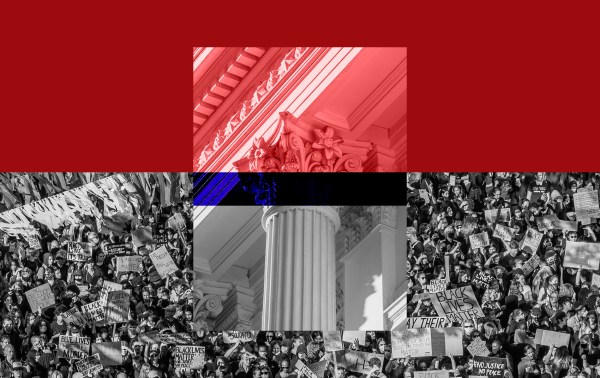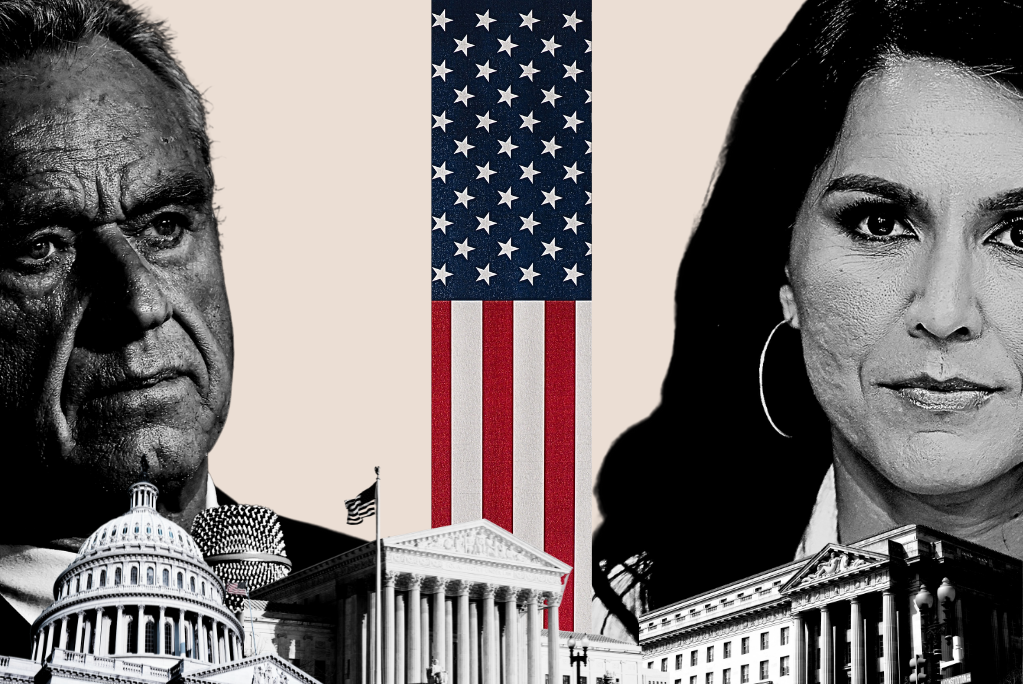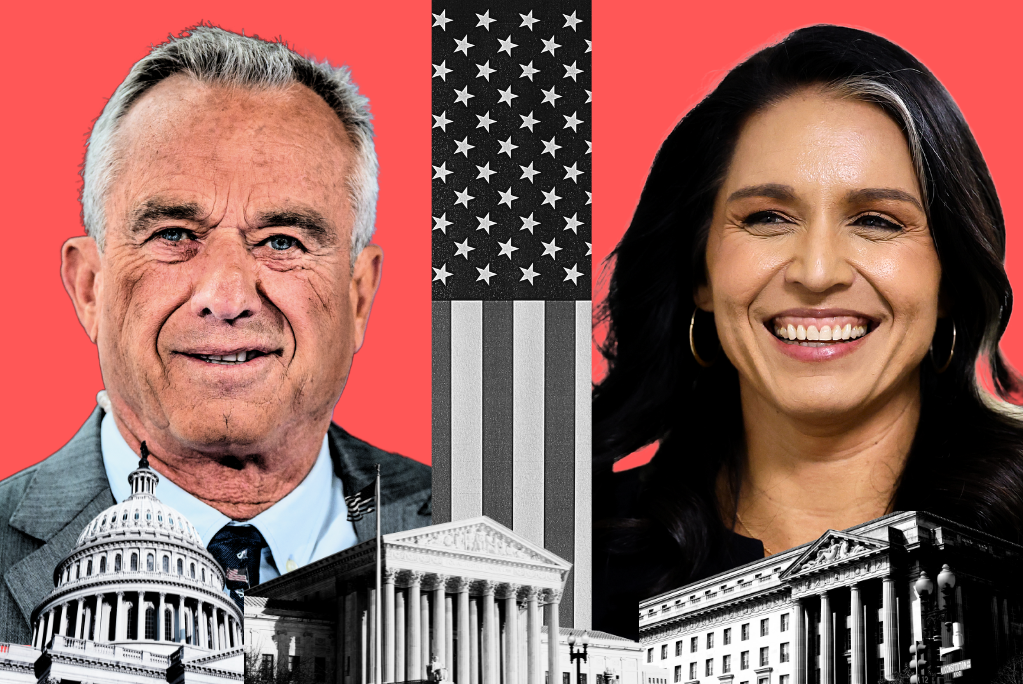One of the first executive orders President Donald Trump signed upon beginning his second term was the “Initial Rescissions of Harmful Executive Orders and Actions,” which included counteracting the “injection of ‘diversity, equity, and inclusion’ (DEI) into our institutions [that] has corrupted them by replacing hard work, merit, and equality with a divisive and dangerous preferential hierarchy.” He went on to sign orders “Ending Radical and Wasteful Government DEI Programs and Preferencing” and, on day two, “Ending Illegal Discrimination and Restoring Merit-Based Opportunity.” And he’s continued pursuing that mission, most recently signing an order “Reforming Accreditation to Strengthen Higher Education,” in part by removing DEI criteria.
Taken together, these orders mark a complete reversal of President Joe Biden’s focus on insinuating DEI into every nook and cranny of federal structures and programs. While couched in anodyne terms—who could possibly want to “perpetuate [the] systemic barriers to opportunities and benefits for people of color” that Biden’s very first order railed against?—Biden’s orders removed barriers to identity-based rules, attacking legal neutrality under the guise of supporting equity. That’s why Biden’s first order also revoked President Trump’s 2020 executive order “Combating Race and Sex Stereotyping,” which, among other things, blocked federal agencies and contractors from giving workplace training based on “divisive concepts.” Apparently it was essential to an administration elected to restore “normalcy” that the government be able to advance a “vision of America that is grounded in hierarchies based on collective social and political identities rather than in the inherent and equal dignity of every person as an individual” (which Trump’s order prohibited).
But didn’t Trump go too far in reversing not only Biden’s whole-of-government DEI push, but President Barack Obama’s directive to “Promote Diversity and Inclusion in the Federal Workforce” and President Bill Clinton’s instruction to “Address Environmental Justice in Minority Populations”? Isn’t that throwing the colorblind baby out with the woke bathwater?
In a word, no. Look, there’s nothing wrong with diversity, equity, or inclusion—as words, values, or goals. It’s good to bring together people with diverse views and backgrounds, to prevent groupthink and facilitate creativity. Equity is a centuries-old concept in Anglo-American law that boils down to fairness and justice, and indeed we ought to treat everyone fairly. We should make people feel included where they work or study, because kindness is costless and also helps organizational missions.
Ilya Shapiro“Diversity has emerged organically as laws and norms change to break down barriers based on immutable characteristics, but mandating it imperils the very merit-based colorblindness that those first pleading for civil rights sought.”
Angel Eduardo“In our recoiling from the excessive and counterproductive programs and efforts that have appeared under the DEI banner these last few years, we shouldn’t pretend that the issues they ostensibly sought to address don’t exist or shouldn’t be addressed intelligently.”
The problem arises when DEI dogma perverts those basic words to mean the opposite of their dictionary definitions, to stifle intellectual diversity, undermine equal opportunity, and exclude dissenting voices. DEI as practiced stands for discrimination, exclusion, and indoctrination—and treating people in ways that make social justice warriors indistinguishable from white supremacists.
That’s why I’m not calling for the repeal of anti-discrimination laws—though Trump’s executive order removing disparate-impact analysis from their application to civil-rights enforcement is a good step—just the reversal of their cancerous outgrowth. If you institutionalize equity policies that go beyond “make sure you’re not just recruiting from your alma mater,” you end up with quotas, as well as training that labels “excellence” and “rigor” as racist tropes. Diversity has emerged organically as laws and norms change to break down barriers based on immutable characteristics, but mandating it imperils the very merit-based colorblindness that those first pleading for civil rights sought.
DEI structures and systems take the noble mission of eradicating racial discrimination and other bigoted actions and replace it with an equally illiberal identitarianism. They enforce a noxious ideology that contends that truth is subjective and must be viewed through the lenses of race, gender, and other identity categories, according to some privilege hierarchy. Your rights and freedoms—including what sentence you get for committing a crime and whether you can get hired—thus depend on whether you’re part of a class deemed oppressor or oppressed.
We don’t need that postmodern nonsense to achieve a society of equal human dignity where people are judged solely on the content of their character and have equal opportunity to pursue happiness. To frame this in terms that should appeal even to progressives who might be sympathetic to the DEI project but just want to trim its “excesses,” DEI inhibits social justice because it rejects such liberal values as due process and equality under the law. There’s simply no way to reform an ethos that’s antithetical to the American way of life, so it’s time to dismantle what I’ve called the diversity-industrial complex. To coin a phrase: End it, don’t mend it.
DEI is most pernicious in higher education, not just because that’s where its theoretical architecture was built but because, unlike in the “real world,” academic institutions lack a critical mass of dissenters. As we saw from the out-of-touch university presidents who testified after October 7—not least because their DEI offices are the font of their antisemitism—weak leaders have placated the illiberal left that now drives campus culture. University officials facilitate and even foment social-justice mobs, with everyone else keeping their heads down so as not to be caught in the cancellation crossfire. The recent growth of apparatchiks with no connection to teaching or research chills speech and eviscerates due process.
DEI offices have broadened terms like “harassment” and “discrimination,” as well as therapeutic terms like “harm” and “safety” not to promote equal opportunity or a welcoming campus environment but to enforce progressive ideology. The infamous case of the Stanford Law School DEI dean who egged on the shout-down of federal Judge Kyle Duncan two years ago was illustrative of how these regimes are incompatible with universities’ basic missions.
Duncan had been invited to discuss how courts reach decisions in times of doctrinal flux. Alas, many students weren’t interested in that sort of nerdy experience elite schools pride themselves on providing, because Duncan hasn’t adopted contemporary mores, particularly on LGBT issues. His work was “problematic,” so he was deemed unfit to enter Stanford’s progressive utopia.
The morning of the event, the associate dean for DEI, Tirien Steinbach, sent a schoolwide email noting that Duncan had “repeatedly and proudly threatened healthcare and basic rights for marginalized communities … and his presence on campus represents a significant hit to their sense of belonging.”
About 100 students lined up outside the event to boo those who entered, trying to shame individual classmates by name. As Duncan approached the room, someone shouted, “I hope your daughters get raped!” When he took the stage, he was jeered continually.
After Duncan asked for help in trying to restore order, Steinbach came up, identified herself, and pulled out prepared remarks. She said that the event was causing “real pain” and that “the juice wasn’t worth the squeeze.”
Law school Dean Jenny Martinez eventually issued a letter that was the best recent exposition of free-speech values that we’ve seen from a prominent university official. But the second part of her letter, in which she discussed why “our commitment to diversity and inclusion means that we must protect the expression of all views,” is telling. Martinez laid out a synthesis of liberal values, but I doubt that anyone who views things through racial and gendered lenses of intersectional power dynamics will accept neutral rules based on objective principles of equality and dignity. The radical theories on which DEI is based maintain that existing social structures are forms of oppression.
The Stanford incident thus exemplifies why DEI is irredeemable. Of course it would be the DEI dean who commandeered a student event to berate a speaker about the supposed “harm” his mere presence was causing.
The irony is that DEI regimes lead schools to become places with fewer ideas, fewer opportunities, and fewer of the mavericks who so often produce outside-the-box thinking. DEI isn’t just a harmless institutional add-on; the way in which each plank of its platform has been defined has turned its ideology into administrative acid.
As columnist Jarrett Stepman put it, the growth of DEI is “in line with larger trends in American society as diversity consultants operate to inculcate woke orthodoxies in elite institutions. Legions of DEI officers populate corporate boardrooms, government agencies, and K–12 schools.” These activists are “the shock troops of a top-down social revolution being foisted on America and much of the West.”
The dynamic was described by former Treasury Secretary Lawrence Summers, who had been forced out of Harvard’s presidency for discussing why there are more men than women at both the lower and upper tails of test-score distributions. “There is a great deal of absurd political correctness,” Summers said on Bill Kristol’s podcast in 2016. “Now, I’m somebody who believes very strongly in diversity … but it seems to me that there is a kind of creeping totalitarianism in terms of what kind of ideas are acceptable and are debatable on college campuses.”
Opposing Debate
In that vein, let’s turn Dean Steinbach’s message around: Is the DEI juice worth the squeeze? Tal Fortgang, a recent New York University Law graduate and also now a Manhattan Institute colleague, has written that DEI, at least as employed by its professional purveyors, “cannot be made to conform with a law school’s openness to those who dissent from a very narrow progressive orthodoxy.” That’s because DEI, notwithstanding its facially unobjectionable name, “is predicated on contestable progressive assumptions and a thoroughly left-wing worldview that make it incompatible with the proper practice of law.” To the extent such illiberal principles continue to infuse public, private, and nonprofit bureaucracies, our institutions will systemically work against anyone who is quite literally politically incorrect.
In the end, Steinbach reinforced the basic tenets of her vocation: favoring groups according to a privilege hierarchy, pushing for equal outcomes, and dismantling any institutions that dare resist such goals. Despite the insistence of academic grandees that DEI supports free speech, objective inquiry, and the development of legal and other academic traditions, it is the DEI project that marginalizes and excludes.
The New York Times’ Nate Cohn astutely identified the key characteristics of the new DEI-ified left: (1) speaking with righteousness, urgency, and moral absolutism; (2) being very conscious of identity, elevating “marginalized voices” such that the personal is political; (3) seeing society as a web of overlapping power structures, constituted by language and norms as much as by law and policy, with academic jargon entering the mainstream and the equation of hurt feelings with the physical harms of traditional oppression; (4) viewing racism, sexism, and other “intersectional” hierarchies as deeply embedded, leading to a pessimistic view of America; and (5) prioritizing the pursuit of a more equitable society over Enlightenment-era values, such that “equal rights are a veneer that conceal and justify structural inequality.”
That’s not a full diagnosis of the complex social phenomena afflicting our society, but it covers much of how DEI programs operate. Whatever good faith the diversity-industrial complex brings to bear, it ends up bludgeoning people into mouthing platitudes they don’t believe and excluding them if they resist. It is at the root of the illiberal takeover of our institutions, so we must excise it root and branch.





Please note that we at The Dispatch hold ourselves, our work, and our commenters to a higher standard than other places on the internet. We welcome comments that foster genuine debate or discussion—including comments critical of us or our work—but responses that include ad hominem attacks on fellow Dispatch members or are intended to stoke fear and anger may be moderated.
With your membership, you only have the ability to comment on The Morning Dispatch articles. Consider upgrading to join the conversation everywhere.